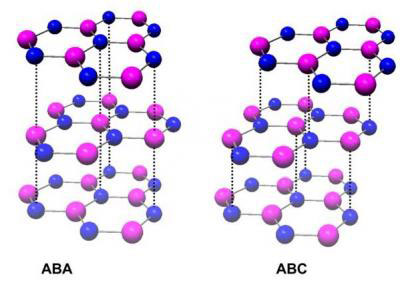 An accidental discovery in a physicist's laboratory at the University of California, Riverside provides a unique route for tuning the electrical properties of graphene, nature's thinnest elastic material. This route holds great promise for replacing silicon with graphene in the microchip industry.
An accidental discovery in a physicist's laboratory at the University of California, Riverside provides a unique route for tuning the electrical properties of graphene, nature's thinnest elastic material. This route holds great promise for replacing silicon with graphene in the microchip industry.
Sep 26th, 2011
Read more
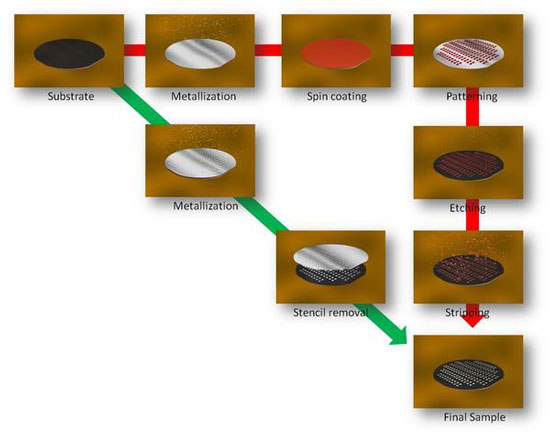 It may soon be possible manufacture the miniscule structures that make up transistors and silicon chips rapidly and inexpensively. EPFL scientists are currently investigating the use of dynamic stencil lithography, a recent but not yet perfected method, for creating nanostructures.
It may soon be possible manufacture the miniscule structures that make up transistors and silicon chips rapidly and inexpensively. EPFL scientists are currently investigating the use of dynamic stencil lithography, a recent but not yet perfected method, for creating nanostructures.
Sep 26th, 2011
Read more
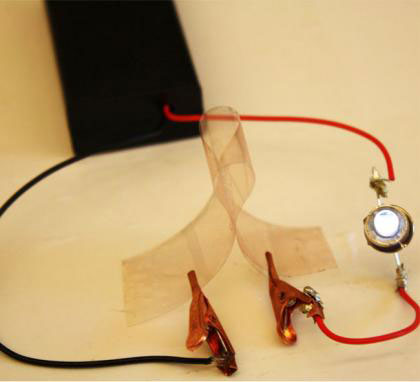 Nanowires of copper could eliminate busted cell phone screens and make solar cells more competitive with fossil fuels.
Nanowires of copper could eliminate busted cell phone screens and make solar cells more competitive with fossil fuels.
Sep 26th, 2011
Read more
Researchers of the Chemical Engineering department and the Kavli institute of the TU DElft have demonstrated that electrons can move freely in layers of linked semiconductor nanoparticles under the influence of light. This new knowledge will be very useful for the development of cheap and efficient quantum dot solar cells.
Sep 26th, 2011
Read more
Researchers have developed a new flexible memory fabric woven together from interlocking strands of copper and copper-oxide wires. At each juncture, or stitch along the fabric, a nanoscale dab of platinum is placed between the fibers.
Sep 26th, 2011
Read more
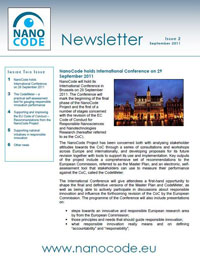 The second issue of the NanoCode newsletter has been published. It provides information on the NanoCode project.
The second issue of the NanoCode newsletter has been published. It provides information on the NanoCode project.
Sep 26th, 2011
Read more
A research group from the Karlsruhe Institute of Technology in Germany reports in Langmuir how Surface Enhanced Ellipsometric Contrast (SEEC) microscopy can be used to provide a plausible scenario as to the behavior of labelled lipids at a surface.
Sep 26th, 2011
Read more
Improved device eliminates a barrier to handling nanoscale particles.
Sep 26th, 2011
Read more
To illustrate is to enlighten. The National Science Foundation and the journal Science created the International Science and Engineering Visualization Challenge to celebrate that grand tradition - and to encourage its continued growth.
Sep 26th, 2011
Read more
 Die NanoKommission wurde 2006 im Rahmen des Nano Aktionsplans der deutschen Bundesregierung als zentrale, nationale Dialogplattform geschaffen. Die NanoKommission arbeitete in zwei Dialogphasen (2006-2008 und 2009-2011) und schloss diese jeweils mit einem Abschlussbericht und Empfehlungen an die Bundesregierung ab.
Die NanoKommission wurde 2006 im Rahmen des Nano Aktionsplans der deutschen Bundesregierung als zentrale, nationale Dialogplattform geschaffen. Die NanoKommission arbeitete in zwei Dialogphasen (2006-2008 und 2009-2011) und schloss diese jeweils mit einem Abschlussbericht und Empfehlungen an die Bundesregierung ab.
Sep 26th, 2011
Read more
Leading lithographers from North America, Asia and Europe will gather to discuss potential solutions to critical technical issues on bringing extreme ultraviolet lithography into high-volume manufacturing.
Sep 26th, 2011
Read more
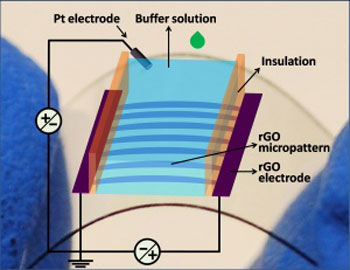 Reduced graphene oxide provides a low-cost basis for the fabrication of flexible thin film transistors.
Reduced graphene oxide provides a low-cost basis for the fabrication of flexible thin film transistors.
Sep 26th, 2011
Read more
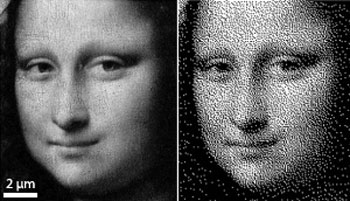 Three-dimensional polymer structures can be produced by growing polymer brush structures from a printed two-dimensional pattern of polymer initiators.
Three-dimensional polymer structures can be produced by growing polymer brush structures from a printed two-dimensional pattern of polymer initiators.
Sep 26th, 2011
Read more
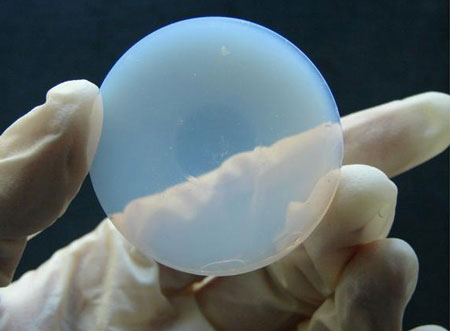 AEROCOINs, an FP7 project coordinated by Tecnalia Research and Innovation, proposes to create a new superinsulating material by overcoming the two major obstacles which have prevented a wide-spread use of silica-based aerogel super-insulation components in buildings and construction.
AEROCOINs, an FP7 project coordinated by Tecnalia Research and Innovation, proposes to create a new superinsulating material by overcoming the two major obstacles which have prevented a wide-spread use of silica-based aerogel super-insulation components in buildings and construction.
Sep 26th, 2011
Read more
Chinese researchers published more than 1.2 million papers from 2006 to 2010 - second only to the United States. But these impressive numbers mask an uncomfortable fact: most of these papers are of low quality or have little impact. Citation per article (CPA) measures the quality and impact of papers. China's CPA is 1.47, the lowest figure among the top 20 publishing countries.
Sep 26th, 2011
Read more
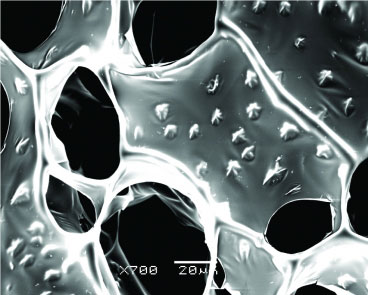 New cardiac patch uses gold nanowires to enhance electrical signaling between cells, a promising step toward better treatment for heart-attack patients.
New cardiac patch uses gold nanowires to enhance electrical signaling between cells, a promising step toward better treatment for heart-attack patients.
Sep 26th, 2011
Read more
 An accidental discovery in a physicist's laboratory at the University of California, Riverside provides a unique route for tuning the electrical properties of graphene, nature's thinnest elastic material. This route holds great promise for replacing silicon with graphene in the microchip industry.
An accidental discovery in a physicist's laboratory at the University of California, Riverside provides a unique route for tuning the electrical properties of graphene, nature's thinnest elastic material. This route holds great promise for replacing silicon with graphene in the microchip industry. 








 Subscribe to our Nanotechnology News feed
Subscribe to our Nanotechnology News feed